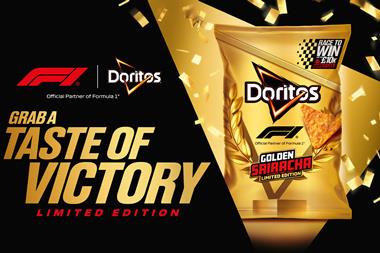
Consistency is always a priority for global drinks brands. But when you reach scale, there is tension between that consistency and the need to build flexibility into brand worlds.
Those that have widespread appeal need to be able to flex their tone so that their communication speaks to local audiences, with different cultural preferences and drinking rituals. This can be increasingly difficult, as the recent news of Diageo selling Pimm’s shows – the brand currently just isn’t capable of translating beyond its UK-centric, summer-drinking focus.
When you operate and speak to consumers in dozens of markets and hundreds of countries, while also facing a proliferation of competitors, data, time pressure and cultural nuances, your brand can get lost in the noise of modern life. A tightly designed brand system can often be misused due to the sheer range and scale of partners and third parties employing assets across different markets. They often have wildly different skillsets and resource available to roll out content.
Faced with this, that balance between consistency and flex can be especially hard to maintain. You need standout branding to cut through the noise. But your scale of operation and reach often means creativity and consistency are hampered and pared back.
Using tech to build scale
Technology has been increasingly useful – and liberating – for global brands tackling design systems at scale in this way. New tech can unlock time, money and headspace to innovate while maintaining quality. Global drinks brands especially are starting to recognise this potential.
Take Coca-Cola. As one of the biggest brands in the world, operating in a fast-moving market, it faces more complexity than most. Over recent years the company has embraced AI to help navigate this environment.
For example, AI collects and analyses vast amounts of data to determine which of its numerous brands are likely to thrive in each market. Another focus is social media, where it uses the technology to analyse conversations around how people use and interact with its products to drive innovation and marketing strategy.
Scale was also a huge factor when Jägermeister refreshed its brand identity last year. It needed to maintain established market recognition while building attribution for a new audience.
A hugely diverse audience experiences the product through different drinking rituals – from being served as an ice-cold digestif in South Africa to pairing it with milk in China. Accommodating global markets with wide-ranging needs, we helped update the brand in a way that created a unified global presence but with local energy.

The Jägermeister approach
To maintain the balance between consistency and flexibility across numerous partners, regions and touchpoints, we developed an asset generator. A bespoke piece of software with simplified tools, it allows marketing teams to use the distinctive assets with confidence across markets (through sliders pre-configured around the brand system principles and rules, such as colour combinations, patterns and texture treatments). It makes the design more accessible at a local level.
In Germany for example, the brand’s home market, the transition to the wider scope of visual expression needed to be more gradual. Its audience there is long-established and more invested in the pared-back visual language of the brand. The German teams use more of the Jägermeister green with neutrals from the palette.
In Switzerland however, teams can make a more immediate switch to the new tools and options available. They can lean into more of the orange and green combinations and wider graphic language, including the new textures and bold patterns. The generator has been pre-configured to accommodate all of these variables while staying true to the guidelines.
Using technology can free up teams to focus on priorities and challenges that require more creative solutions. Supporting the successful rollout of brands at scale in this way – to help with asset generation and below-the-line applications – opens up time, resource and money to invest in more interesting creative applications and more impactful brand building elsewhere. It can be a useful ally in delivering consistent work while accommodating the creative flexibility global drinks brands need today.



















No comments yet